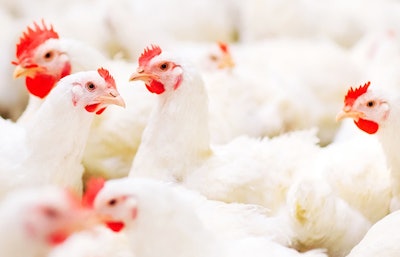
Split-feeding – where hens are fed two different feeds per day – could help improve feed costs, breeder performance and overall sustainability.
“Basically, split-feeding is a precision feeding system that provides the appropriate nutrient supply for layer hens. Split-feeding better supplies the breeder’s needs because it considers the different needs of the layer hens throughout the day according to the egg formation process,” explained Felipe Sanchez Fernandez of Trouw Nutrition.
“The diet in the morning focuses on the requirements of the layer hens, while the diet in the afternoon focuses on the nutrients needed for eggshell formation.”
Research center studies revealed that when laying hens can self-select nutrients, they take in more protein and energy in the morning and have a higher intake of calcium later in the day. This suggests that the birds may be able to use these nutrients more efficiently when consumed in periods of the day when the requirements are highest.
The benefits
Improving the efficiency of nutrient use could offer many benefits to broiler breeders, including improvements to eggshell quality which can lead to increases in the number of hatched eggs and additional chicks per broiler breeder. Split-feeding can also lower feed cost for the birds, improve feathering, reduce pecking and other behaviors that can indicate hunger.
“There are many benefits to split-feeding. First, there are financial benefits because this system reduces feed costs. It can also improve breeder performance and result in more chicks per hatch. The second group of benefits is in welfare because split feeding decreases feelings of hunger, improving satiety and reducing pecking activity,” Sanchez Fernandez said.
Split-feeding can also improve the sustainability of poultry production due to this more accuracy nutrient supply. As the breeder’s hens consume less and use needed nutrients more efficiently, this approach leads to minor excretion of nutrients by feces and reductions in CO2 emissions.
Like what you just read? Sign up now for free to receive the Poultry Future Newsletter.


















